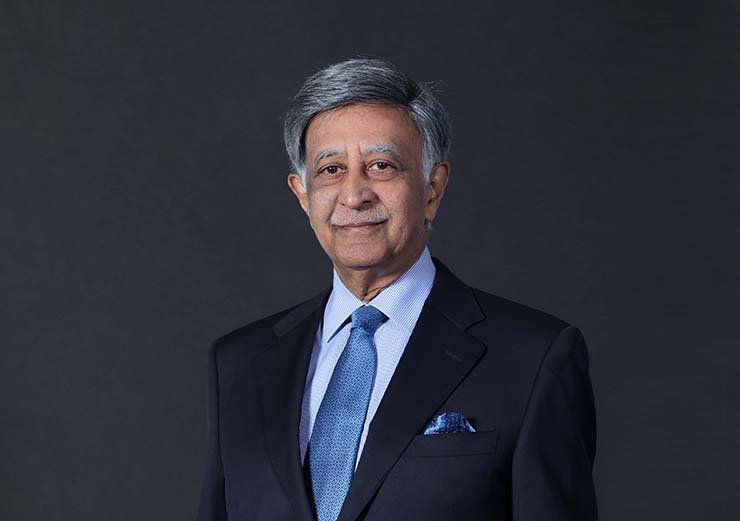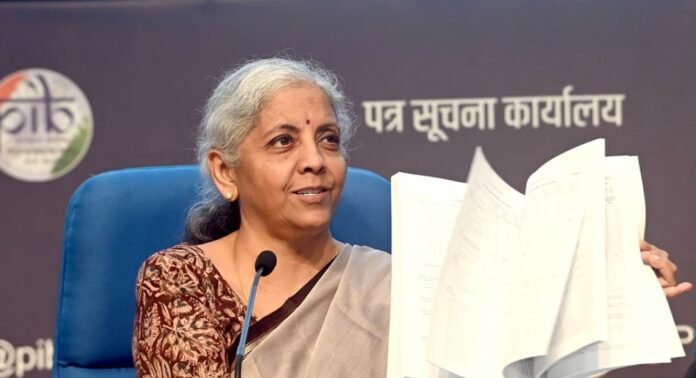Finance Minister Nirmala Sitharaman while presenting the Union Budget 2024, on Tuesday, July 23, 2024 announced that the Government has allocated Rs 6,21,940 crore for defence spending in the Union Budget 2024-25 – up from last year’s outlay of Rs 5.94 lakh crore. In the Interim Budget 2024, Rs 6,21,541 crore lakh crore was allocated for the defence sector. The allocation was 4.72 per cent more than what it was in financial year 2023-24.
The capital outlay has been pegged at Rs 1,72,000 crore. The total allocation to the defence sector is 12.9 per cent of the total budget of the government of India for the financial year 2024-25.
In a statement on X, Defence Minister Rajnath Singh thanked Nirmala Sitharaman for giving the “highest allocation”, which is 12.9 per cent of the total Budget for the financial year 2024-25.
“The capital outlay of Rs 1,72,000 Crore will further strengthen the capabilities of Armed Forces. Earmarking of Rs, 1,05,518.43 Crore for domestic capital procurement will provide further impetus to the Aatmanibharta programme. I am pleased that Border Roads have been given 30% increase in allocation over the last budget under the capital head. This allocation of Rs 6,500 Crore to BRO will further accelerate our Border Infrastructure.
“To boost the startup ecosystem in Defence Industries, Rs 518 crore has been allocated to iDEX scheme to fund technological solutions given by startups, MSMEs and innovators,” Rajnath Singh posted.
Defence Budget 2024
The defence budget comprises three main components: revenue (salaries for the forces), capital expenditure (purchasing weapons and other essential equipment), and pensions.
The government has allocated Rs 1.72 lakh crore for capital expenditure, which is just an increase of Rs 10,000 crore from last year’s outlay of Rs 1.62 lakh crore. Capital expenditure is the spending to buy new equipment like ships, tanks, fighter jets, and submarines.
The revenue budget, which is the budget allocated for day-to-day spending and salaries, has been kept the same as the interim budget of Rs 2.82 lakh crore. This is a slight increase of Rs 12,652 crore from the previous fiscal year 2023-24.
The capital outlay this year has been pegged at Rs 1,72,000 crore. The total allocation to the defence sector is 12.9 per cent of the total budget of the government of India for the financial year 2024-25
The government has allocated Rs 1.41 lakh crore for pensions this year, slightly higher than last year’s Rs 1.38 lakh crore.
Moreover, the Border Road Organisation has been given a 30 per cent increase to Rs 6,500 crore. Furthermore, for the startup ecosystem in defence, another Rs 518 crore has been allotted to the Innovations for Defence Excellence scheme to fund technological solutions provided by startups, micro, small and medium enterprises and innovators.
Of the allocation this year, 27.67 per cent goes to capital, 14.82 per cent for revenue expenditure on sustenance and operational preparedness, 30.68 per cent for pay and allowances, 22.72 per cent for defence pensions and 4.11 per cent for civil organisations under the ministry of defence, a ministry statement added. The capital budget is spent on adding new weapons, systems and equipment.
The budget comes just days after a top air force officer said that Aatmanirbharta cannot be at the cost of the nation’s defence, suggesting that the forces will need cutting-edge weapons to match the capabilities that India’s adversaries have. It was not clear whether he was hinting at imports or urging the local manufacturers to up their games.
India has been focusing on ‘self-reliance’ or Aatmanirbharta, meaning more weapons will be developed indigenously, which will cut import costs and will ensure a disruption-free supply of weapons in difficult times when the country can’t solely rely on foreign supply.
Vice Chief of the Air Staff, Air Marshal AP Singh while speaking at an event organised by the Centre for Air Power Studies (CAPS) in Delhi, said that Aatmanirbharta is what India is riding on. “But this Aatmanirbharta cannot be at the cost of the nation’s defence. Nation’s defence comes first and foremost and if Indian Air Force or Indian forces have to ride on this Aatmanirbharta, it is only possible if everyone – from DRDO to DPSU, to the private industry holds the hand and takes us to that path and don’t let us deviate from that path,” he said.
Aatmanirbharta, it is only possible if everyone – from DRDO to DPSU, to the private industry holds the hand and takes us to that path and don’t let us deviate from that path: Vice Chief of the Air Staff, Air Marshal AP Singh
“Because when it comes to national defence, there will be compulsions to deviate from their path in case we do not get the things that we need or the kind of system and weaponry that is required to survive in today’s world. So, my humble request to each one of us here is that let’s put a system in place where we are helping each other out in achieving the overall goal, which is our goal. It is not anybody else’s. If we have to defend the nation, it is everybody’s job. It is not just the job of a person in uniform,” he added.
If India turns to foreign countries for cutting-edge weapons, its import bill will soar. The other issues the defence sector is facing are rising salary and pension costs. Experts believe that the Centre’s Agnipath scheme is aimed at bringing down the pension cost, but a section of former army veterans and society want some tweaking in the scheme to make it more attractive. If the government goes for longer service years from 4 to say 7 or 10, as some veterans have suggested, it will increase the costs.
A research paper published by Manohar Parrikar Defence Institute in February 2020 said the share of the defence pension had increased the most, and together with P&A (Pay and Allowances) accounted for 61 per cent of the Defence Ministry’s total budget in 2020-21, up from 49 per cent in 2011-12.
More significantly, the paper stated, nearly the entire increase in the pension’s share had come at the cost of capital procurement, which together with stores had dwindled by 11 percentage points from 36 per cent in 2011-12 to 25 per cent in 2020-21.
Meanwhile, Sitharaman also announced plans to roll out an ambitious scheme for “deep-tech” technologies in the military domain.
A total of Rs 1.72 lakh crore was set aside for the military for capital expenditure that largely includes purchasing new weapons, aircraft, warships and other military hardware.
“With the government targeting defence exports of Rs 35,000 crore by FY 2025, the focus will likely be on R&D to advance technological innovations and favourable policies to encourage private sector participation through strategic partnerships,” said Gurpreet Sidana, CEO of Religare Broking. Additionally, increased funding for the Agnipath recruitment scheme and steps towards integrated capability development reflects government’s long-term strategic planning and commitment to strengthening defence preparedness.
While the budget allocation for Defence Industry is in expected lines, creation of the Critical Minerals Mission and articulation of India’s strategy on Small Modular Nuclear Reactors will go a long way in bolstering the Aatmanirbharta Bharat agenda: Baba Kalyani, Chairman & MD, Bharat Forge Ltd
Commenting on the budget, Baba Kalyani, Chairman & MD, Bharat Forge Ltd, said, “The latest budget is an excellent budget that lays strong emphasis on strengthening the fundamental pillars that would propel Indian economy towards a Viksit Bharat.”

Kalyani further said that, “I greatly appreciate the operationalisation of Anusandhan NRF and the exclusive venture-fund for Space segment. More importantly, the 1-lakh crore financing pool to bolster private sector driven research and innovation at commercial scale will have a great impact in transitioning India towards becoming a Product’s Nation in the long-term.”
“While the budget allocation for Defence Industry is in expected lines, creation of the Critical Minerals Mission and articulation of India’s strategy on Small Modular Nuclear Reactors will go a long way in bolstering the Aatmanirbharta Bharat agenda,” he added.
 “We are all greatly inspired by the vision for a Viksit Bharat by 2047 and I am confident that these initiatives collectively signal a robust blueprint for India’s progressive, integrated and inclusive development,” stated Baba Kalyani.
“We are all greatly inspired by the vision for a Viksit Bharat by 2047 and I am confident that these initiatives collectively signal a robust blueprint for India’s progressive, integrated and inclusive development,” stated Baba Kalyani.
Reacting to the budget 2024 and announcement of the credit guarantee scheme for loans up to Rs 100 crore for MSMEs, Mayank Dalmia, Co-founder of Wave Mechanics, stated, “The announcement of the credit guarantee scheme for loans up to Rs 100 crore for MSMEs can provide a much-needed boost for MSME manufacturers. We will need to wait for further details and clarifications to understand its scope and applicability, but it has the potential to unlock a flurry of investment into machinery and capital equipment.”
By focusing on indigenous manufacturing, technological advancements and integrated planning; the government aims to build a robust defence industrial base that can meet emerging security challenges and bring net dollar inflow by being a defence exporter
Wave Mechanics specialises in delivering solutions for the aerospace, high-frequency microwave electronics, medical, and telecommunication industries as an export-oriented unit. In the aerospace sector, the company’s products are primarily used in electro-optics, RF electronics, avionics, and airborne structures.
It is expected that the Union Budget 2024 should set a clear roadmap for enhancing India’s defence sector by prioritising modernisation, self-reliance and strategic partnerships. By focusing on indigenous manufacturing, technological advancements and integrated planning; the government aims to build a robust defence industrial base that can meet emerging security challenges and bring net dollar inflow by being a defence exporter. This strategic approach not only strengthens India’s defence capabilities but also positions the country as a significant player in the global defence market.
-The writer is a New Delhi-based senior commentator on international and strategic affairs, environmental issues, an interfaith practitioner, and a media consultant. The views expressed are personal and do not necessarily carry the views of Raksha Anirveda










